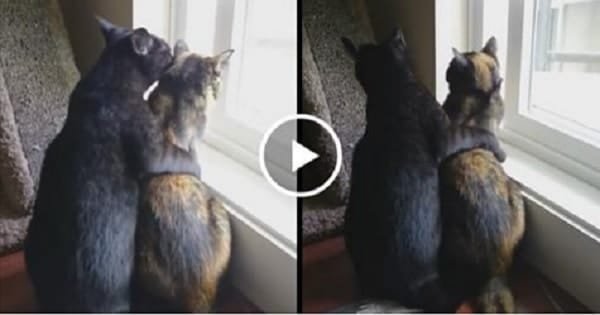WASHINGTON, DC – Hannah Shaw has made it her life’s mission to save the tiniest cats.
Hannah Shaw finds abandoned kittens everywhere she goes. She discovered two which were abandoned in a friend’s backyard compost bin. (The names Earthworm and Scraps seemed to fit quite well.) She spotted another cowering up in a tree in Philadelphia. “I climbed up, put her in my shirt, climbed back down, and thought, “Oh, shit! What am I supposed to do?” Shaw recalls.
She felt like she absolutely had to do something. After all, on city streets, orphaned neonatal kittens don’t stand a chance for the most part. If their mother is killed, taken to a shelter, or disappears, Shaw says that the litter is very unlikely to survive. Left to fend for themselves, newborn kittens can quickly develop life-threatening malnutrition and other various infections.
Shaw has been rescuing kittens now for the better part of a decade.
“I have kitten radar like crazy, she said. If there’s an orphaned kitten within a mile of me, I will probably know about it.”
She wears a red bandana and a t-shirt emblazoned with the words “Kitten Lady”—a self-styled, feline-crazed Rosie the Riveter.
Nursing kittens may sound cute—and it definitely is—but for this 28-year-old Washington, D.C. resident, it’s a full-time job. For the first few weeks of their lives, Shaw says, kittens are essentially like “squirmy little jelly beans.” Her tiny charges need constant care and attention. They struggle to regulate their body temperature and their fledgling immune systems put them at risk for dangerous infections. They also can’t control their bowel movements. Whenever they eat, Shaw has to rub their bellies with a warm washcloth which imitates their mother’s tongue.
The problem is, there aren’t many resources for the littlest cats. Caring for them is labor-intensive, and many shelters and veterinarians simply don’t have enough staff to tackle the challenge. Since kittens aren’t considered adoptable until they’re just about eight weeks old, other experts may not have seen wee ones so young and vulnerable. And even the best intentions prove to be dangerous. If a young kitten laps up milk from a dish you’ve put outside your apartment, it can cause diharrea; dehydration could be fatal.
In addition to her countless kitten rescues, Shaw also works in non-profit management for animal advocacy groups. When she’s out of the house, she’s usually carrying with her at least one kitten at a time—maybe snuggled in her lap, or tucked into a portable kennel masquerading as a tote bag. They go absolutely wherever she goes, from oil changes to dinners. (If someone looks askance at any quiet mewling, a friend pretends to yawn.)
In urban environments, free-roaming cats are too common of a sight—and a controversial one. They may help keep vermin numbers low, but they’re also frequently implicated in the deaths of billions of birds each and every year. Though it’s hard to pin down the number of “community cats,” the ASPCA estimates that there are tens of millions across the entire country. The organization endorses trap, neuter, release (TNR) programs, in which cities round up street cats, spay or neuter them, and then return them to their colonies. A study published in PLOS One last year modeled just how this method can effectively curb population growth. Shaw is a proponent, too. “If you don’t spay and neuter these cats, there’s never going to be an end to the flow of kittens,” she says.
An active social media presence is also now spreading the word about her work. She currently has more than 52,000 followers on Instagram. Her account is full of squee-inducing photos and also videos, as well as practical information about how to care for neonatal kittens—condensed overviews of the kinds of topics she discusses both in workshops at shelters.
“People tell me, ‘I came for the video of a kitten getting a bath, but I stayed for the education I got,’” Shaw says. “I’m basically trying to trick people into volunteering for their shelter or learning something.”
The emotional toll this work takes can also be more pronounced in the public sphere. Some of the more sickly kittens simply don’t make it, and Shaw finds herself grieving though under a microscope. Her followers “want the cute, fuzzy video,” Shaw says, “not the acknowledgement that kittens get pneumonia.”
in the best-case scenario: Shaw fosters the needy kittens until they’re just old enough to be adopted, then sends them on their way. Despite what you may imagine, her home isn’t an obstacle course of scratching posts and litter boxes. She has two adult cats—Coco, the cat she rescued from the tree, and Eloise, a spunky white cat who lost an eye due to a nasty infection. Otherwise, Shaw says her home is simply a “revolving door of babies.”
That’s because kitten rescuers need to be able to care and be prepared for the next litter, and the one after that.
“Keep space open in your home,” she says, “so you can continue saving lives.”













